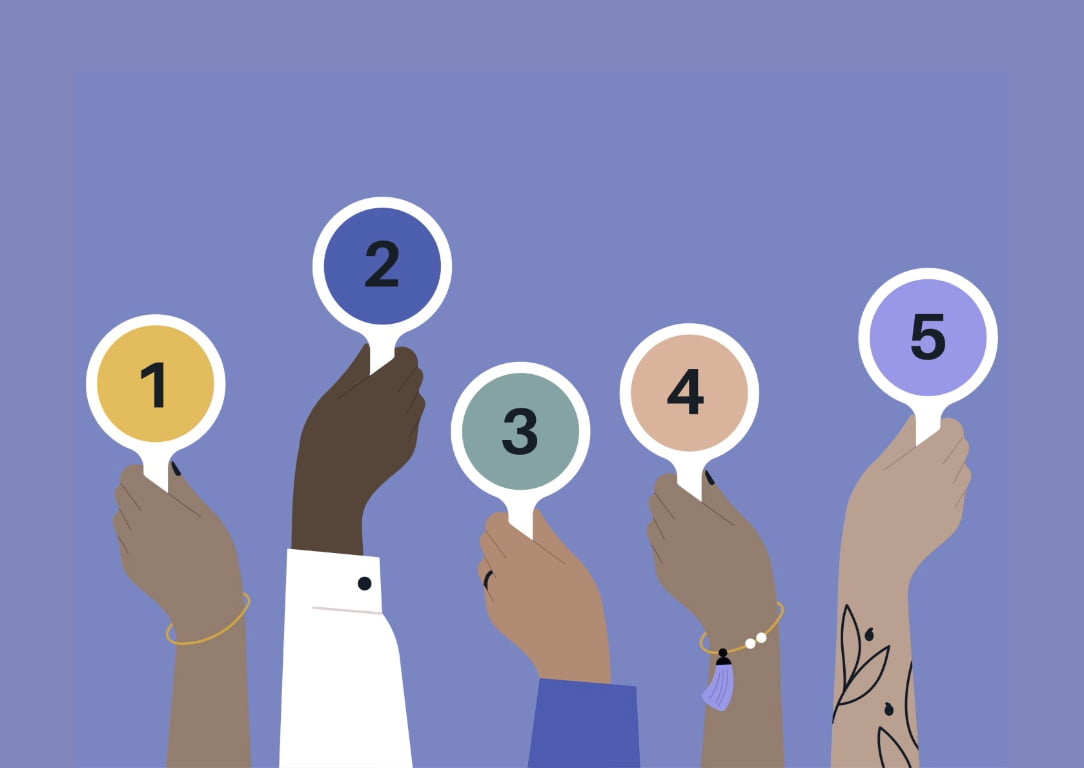Table of Contents
User Surveys In Context
User surveys, when conducted strategically, serve as an invaluable tool for gathering qualitative and quantitative data that can inform decision-making across various aspects of a product or service. As Steve Krug, a renowned usability expert, aptly states, “The best way to find out how people use your product is to watch them.” User surveys, in essence, allow us to observe and understand user behavior, preferences, and pain points, empowering us to create products and services that truly resonate with their needs and expectations. Before embarking on any user survey endeavor, it is crucial to recognize the paramount importance of understanding your audience. This involves delving into their demographics, interests, motivations, and behaviors. Without a clear understanding of who your target audience is, any survey results will lack context and direction. As marketing guru Neil Patel asserts, “If you don’t know your audience, you’re just throwing darts in the dark.”
Crafting Questions with Purpose
The design of a user survey is the cornerstone of its effectiveness. Carefully crafted questions can elicit insightful responses that provide a comprehensive understanding of user experiences and perspectives. Avoid generic, open-ended questions that may lead to vague or irrelevant responses. Instead, focus on specific, well-structured questions that target specific aspects of user behavior or satisfaction. Technology has revolutionized the way user surveys are conducted. Online survey tools offer a plethora of features that streamline the process of creating, distributing, and analyzing survey data. These tools often incorporate advanced features such as question branching, logic, and data visualization, enabling researchers to delve deeper into user responses and uncover hidden patterns.
Once survey data is collected, the task of interpreting the results becomes paramount. This involves analyzing quantitative and qualitative data to identify trends, patterns, and outliers. Statistical analysis can provide valuable insights into user demographics, preferences, and pain points. Qualitative feedback, often gathered through open-ended questions, can reveal deeper motivations, concerns, and suggestions. The true power of user surveys lies in their ability to drive meaningful change. By translating survey insights into actionable strategies, businesses can optimize their products and services to better align with user needs and expectations. This user-centric approach leads to increased user satisfaction, improved product adoption, and ultimately, enhanced business outcomes.
Getting to Know Your Audience
Creating an app without a comprehensive understanding of your audience is akin to navigating a ship without a compass. User surveys act as the compass, guiding developers through the intricate waters of user preferences, behaviors, and expectations. Before delving into the world of coding and design, it is imperative to invest time and effort into getting to know the intended users.
Types of User Surveys
Demographic Surveys
Delving into the intricate layers of user surveys, it becomes evident that demographic information serves as a cornerstone, a foundational pillar upon which the entire edifice of informed app development stands. This pillar extends beyond the mere collection of data points like age, gender, location, and occupation. It forms a robust groundwork, a comprehensive understanding of the diverse demographic details of the intended audience. When developers grasp the intricate fabric of their users’ demographics, they embark on a journey that transcends statistical analysis. This understanding becomes a strategic compass, steering the development process toward a more tailored and user-centric approach. The nuanced tapestry of demographics provides not just numerical data but a narrative—a story of who the users are, where they come from, and what aspects of an app would seamlessly integrate into their daily lives.
At the historical roots of leveraging demographic information stands Charles Booth, a luminary figure of the 19th century. Beyond being a philanthropist, Booth earned his place in history as a social researcher who pioneered the use of surveys to study poverty in the vibrant yet socially diverse streets of London. His innovative approach laid the groundwork for comprehending the intricacies of demographic data, demonstrating its profound implications beyond the realm of social research. In essence, Booth’s utilization of demographic surveys marked the inception of a methodology that transcended its original purpose. From studying poverty to influencing the strategic development of applications in the contemporary digital age, demographic information has proven to be a timeless key to unlocking a deeper understanding of user needs and preferences. As we traverse the expansive landscape of user surveys, it is essential to acknowledge and appreciate the profound impact of demographic insights—an indelible mark left by pioneers like Charles Booth.
Usability Surveys
The realm of usability surveys unveils a comprehensive methodology dedicated to evaluating not just the functionality but the very essence of user interaction with an app. This sophisticated approach goes beyond the binary of functionality and delves into the intricate nuances of user experience. It’s a meticulous exploration into how users navigate through an app, the clarity of information presented, and, most importantly, the overall satisfaction derived from the interaction. The canvas of usability surveys is painted with a diverse palette of questions, each stroke strategically aimed at unraveling the layers of user experience intricacies. From inquiring about the intuitiveness of navigation to probing the clarity and accessibility of information, every question becomes a brushstroke capturing the user’s journey through the app. It’s an artistic fusion of quantitative and qualitative data, providing developers with a vivid picture of the user’s engagement and satisfaction levels.
At the helm of pioneering usability surveys stands Jakob Nielsen, a luminary in the realm of web usability consultancy. Hailing from Denmark, Nielsen’s contributions have transcended geographical boundaries, influencing the global landscape of UX Research. His innovative approach to usability surveys has not only defined industry standards but has become an integral part of the UX Research lexicon. Nielsen’s legacy is not confined to a mere introduction of usability surveys; it’s a transformative influence that has shaped how developers approach user experience. Usability surveys, as conceptualized by Nielsen, have become more than just a tool; they are a mindset—a commitment to user-centric design and an unwavering dedication to crafting apps that not only meet functional requirements but elevate the joy and satisfaction users derive from their digital interactions.
Psychographic Surveys
Psychographic surveys emerge as a profound exploration into the intricate realms of user attitudes, values, and lifestyles. This sophisticated style of survey transcends the numerical and ventures into the qualitative dimensions of user experience. It is a profound odyssey into the emotional and psychological landscapes that shape user behavior, providing developers with a nuanced understanding of the factors that go beyond the superficial. The canvas of psychographic surveys is painted with inquiries that reach far deeper than mere demographic markers. Questions delve into the intricacies of user beliefs, aspirations, and the intricate tapestry of their daily lives. From understanding the motivations that drive user choices to unraveling the emotional triggers that influence their decisions, psychographic surveys emerge as a tool that not only provides data but paints a vivid portrait of the user as an individual with desires, preferences, and emotional nuances.
At the forefront of popularizing the concept of psychographics stands Ernest Dichter, a luminary in the field of market research. It was during the transformative 1950s that Dichter’s innovative approach shifted the paradigm of understanding consumer behavior. His vision extended beyond the statistical analysis of demographics, emphasizing the need to comprehend the subjective aspects of user experience. Dichter’s influence laid the foundation for the integration of psychographic surveys into the broader spectrum of user research. The significance of psychographic surveys lies not just in their ability to uncover what users do but in illuminating the why behind their actions. By peeling back the layers of attitudes, values, and lifestyles, developers gain insight into the emotional and psychological underpinnings that drive user decisions. It’s a paradigm shift from a transactional understanding of users to a relational one, acknowledging that user engagement is not solely a rational process but one deeply entwined with emotions and personal convictions.

Task Analysis Surveys
The significance of task analysis surveys lies in their ability to deconstruct user experiences into specific, actionable components. By scrutinizing each task, developers gain a profound understanding of the intricacies of user workflows. This in-depth exploration becomes the cornerstone for optimizing app functionalities, ensuring a seamless alignment with the diverse tasks users aim to accomplish. It’s not just about creating an app; it’s about crafting an experience that seamlessly integrates into the users’ objectives. In the iterative landscape of app development, task analysis surveys become a compass, guiding developers through the labyrinth of user workflows. By understanding the specific tasks users wish to perform, developers can fine-tune the app to not only meet but exceed user expectations. This iterative refinement, informed by task analysis, creates a dynamic feedback loop, ensuring that the app evolves in tandem with the ever-changing landscape of user needs and preferences.
The roots of task analysis can be traced back to the discipline of industrial engineering. In this realm, the focus was on optimizing processes for maximum efficiency and effectiveness. The principles of breaking down complex processes into manageable tasks found resonance in the world of app development, where user interactions mirror the intricacies of industrial workflows. Task analysis, adapted from its industrial engineering origins, has seamlessly transitioned into the digital sphere, becoming an indispensable tool for creating user-centric applications.
Low Response and What to Do
Encountering low response rates or incomplete surveys can be disheartening, but it is essential to resist the temptation to view these outcomes as failures. Instead, consider them as stepping stones towards refining your survey approach. Analyze the patterns emerging from the collected data and feedback, seeking areas where improvements can be made. The iterative process of trial and error is an inherent aspect of user research, and embracing this cycle can lead to more effective survey instruments. Moreover, it’s important to maintain an open line of communication with your audience. Encourage users to provide constructive feedback on the survey experience itself. Understanding the reasons behind non-participation or incomplete responses can offer valuable insights. Perhaps the survey is too lengthy, the questions are unclear, or the overall design could be more user-friendly. By actively seeking user input on the survey process, you create a collaborative environment that fosters improvement.
Additionally, consider diversifying your survey methods. If one format or channel is not garnering the desired engagement, explore alternative approaches. Utilize different mediums, such as email, social media, or in-app prompts, and experiment with the timing and frequency of survey distribution. A multi-faceted strategy can increase the chances of reaching a broader audience and capturing varied perspectives. Furthermore, don’t hesitate to leverage incentives to boost participation. Offering rewards or recognition for survey completion can significantly enhance user engagement. This not only acknowledges the time and effort users invest but also creates a positive association with the survey experience, encouraging future participation.
User Surveys in App Development
Defining Features & Functionalities
User surveys provide developers with valuable insights into the features and functionalities users desire. By directly asking users about their preferences, developers can prioritize the most sought-after features, ensuring the app aligns with user expectations.
Improving User Interface (UI)
The UI of an app plays a crucial role in its success. User surveys help in understanding how users interact with the UI, identifying pain points, and uncovering opportunities for improvement. This iterative feedback loop is essential for refining the UI.
Enhancing User Engagement
Surveys can uncover factors that contribute to user engagement, helping developers create a more compelling and enjoyable user experience. Whether it’s through gamification, social features, or content.
Addressing Pain Points
No app is perfect, and user surveys provide a platform for users to express their grievances and frustrations. Identifying and addressing these pain points is critical for retaining users and ensuring the long-term success of the application.
Iterative Development
The agile development methodology emphasizes iterative cycles of development and feedback. User surveys seamlessly fit into this iterative process, allowing developers to gather feedback at various stages of development.
Bottom Line
In conclusion, the strategic importance of user surveys, particularly in the realm of UX Research, cannot be overstated. These surveys serve as invaluable tools that guide developers through the intricate maze of user preferences and behaviors. From demographic insights pioneered by historical figures like Charles Booth to the contemporary methodologies influenced by usability expert Jakob Nielsen, the evolution of user surveys mirrors the transformative journey of technology. As we navigate the landscape of app development, it becomes abundantly clear that user surveys are not mere checkboxes in a development toolkit; they are compasses steering developers toward the cardinal points of user-centric design. Demographic surveys lay the foundation by providing a comprehensive understanding of user basics, while usability surveys delve into the nuances of user interaction. Psychographic surveys unravel the intricate tapestry of user attitudes and values, and task analysis surveys meticulously break down user workflows.
The pioneers of these survey methodologies, from Charles Booth to Jakob Nielsen, have left an indelible mark on the field of UX Research. Their insights and innovative approaches continue to shape how developers engage with and understand their user base. The importance of user surveys lies not just in gathering data but in weaving a narrative of user experiences, preferences, and aspirations.



